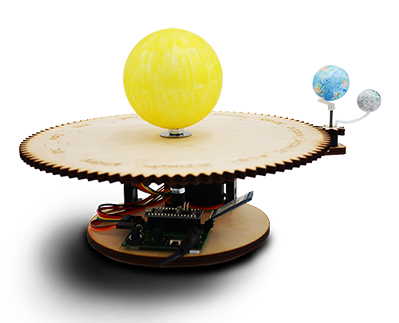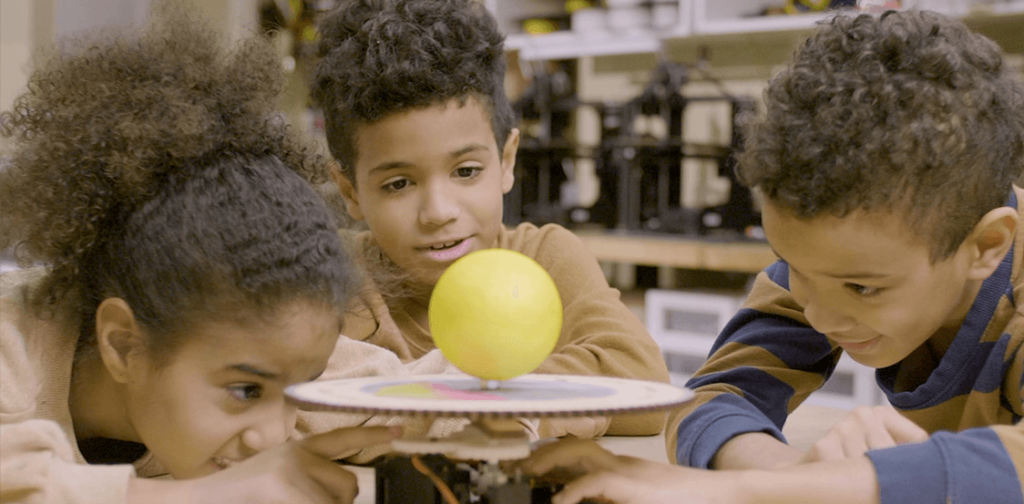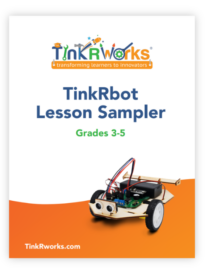
Project Description
Bring planetary and lunar orbits to life with programming. Students create an Orrery — a motorized rotating model of the Sun, Earth, and Moon — and learn about how their relationship affects life on Earth. They explore how the movement of the planets change throughout the day, month, and year, along with what we see in the sky, shadows, and the Earth’s temperature. They also explore how to program buttons and motors to control movement of the earth and moon around the sun.

Key Concepts
Arduino, Axial tilt, Circuit, Conditionals, Control algorithm, Control flow, Duration, Eclipse, Electricity, Encoder, Gas giants, Gears, Jumper wires, LED, Orbit, Orrery, Phases of the moon, Program, PWM, Rocky planets, Rotation, Servo, Tidal lock
Essential Question
How can we create a model of the solar system that demonstrates the movements of the Earth and Moon and how that impacts what we see in the sky and feel on Earth?
Summary of Standards
SAMPLE ALIGNMENT GRADE 5
Computer Science Teaching Association Standards (CSTA)
Students will describe how internal and external parts of computing devices work together, use data to highlight cause-and-effect relationships, create programs that use variables, and create programs that include sequences, events, loops, and conditionals.
Common Core ELA
Students will learn new content specific vocabulary, participate in collaborative group discussions, draw conclusions based on key ideas expressed during discussion, and summarize information that is presented through media.
Common Core Math
Students will work with fractions and represent real world and mathematical problems by graphing points in a coordinate plane.
Next Generation Science Standards (NGSS)
Students will support arguments that differences in the apparent brightness of the sun is compared to other stars is due to their relative distances from the Earth; and that the gravitational force exerted by Earth on objects is directed down. Students will learn about the universe and its stars and the Earth and the solar system.
Texas Essential Knowledge and Skills (TEKS)
Students will monitor comprehension and apply learning techniques such as re-reading, using background knowledge, asking questions, and/or annotating. They will make inferences and use evidence to support understanding. Students will graph ordered pairs of numbers in the first quadrant of the coordinate plane.
Don’t see your standards here? Contact us to find out how this project aligns to your grade(s).
Learn More
Fill out the form below or schedule a demo to learn more. A School Partner will follow up and help answer any questions.

